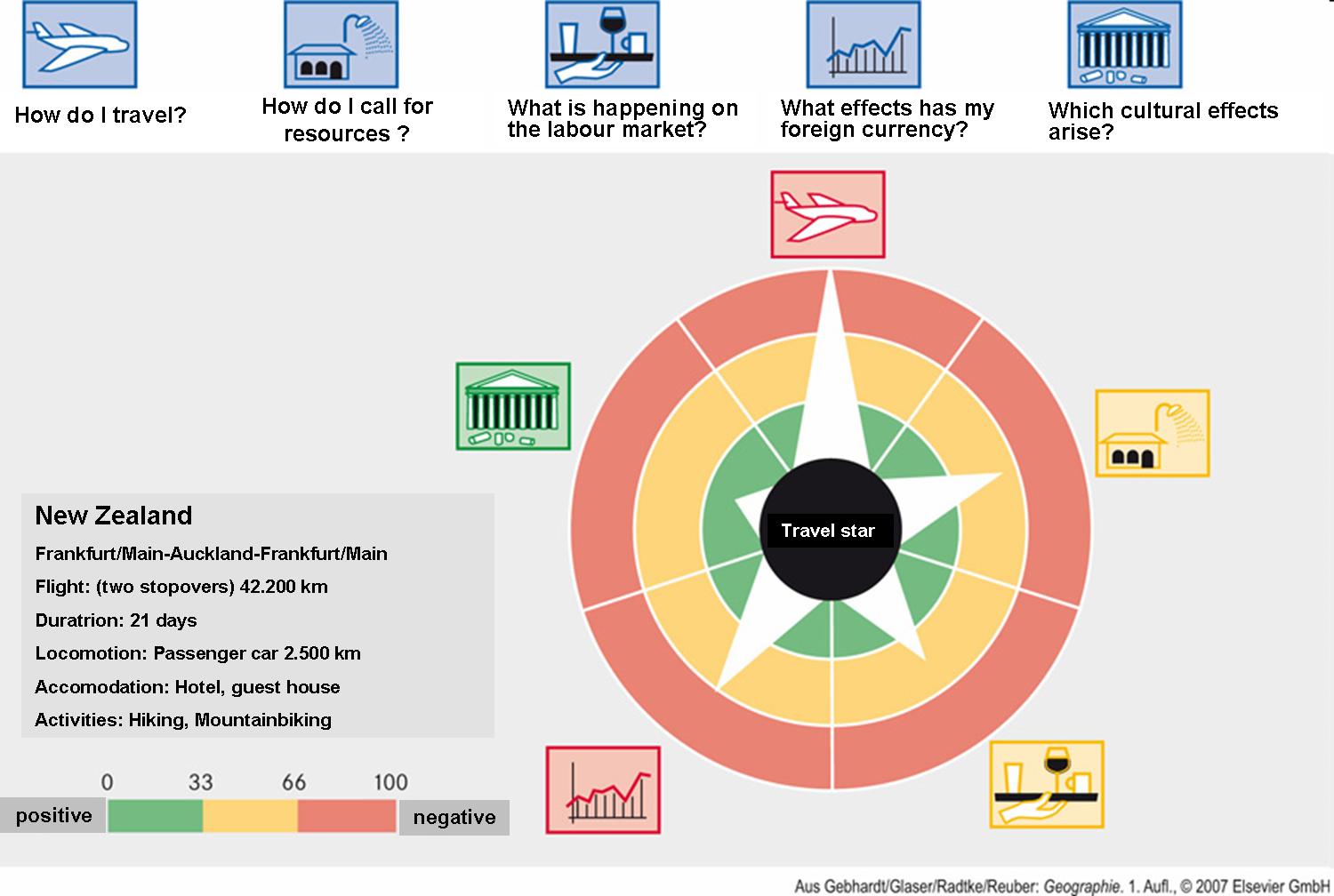4. Mass Tourism
Sustainable Tourism
The travel star
A travel star tries to grasp the call for a gentle respectively sustainable tourism by making the ecological, economic and social effects measureable with the use of indicators. The particular components of a visit (journey there/here, journeys in the target area, accommodation, activities) are rated in consideration of the economy, culture and the potential of an area of unspoiled nature and shown in a chart.

Source: Hopfinger 2007
Task 1: a) Describe the Figure above.
b) Is the portrayed travel sustainable? Give reasons for your statement with the aid of the given categories.
See the world, protect the earth
Report by CNN.com about sustainable tourism
References to eco-tours are popping up in magazines, guidebooks and ads for everything from rainforest tours in Bangladesh to birding trips through Oaxaca, Mexico.
But what, exactly, is ecotourism? That's hard to pinpoint, said Trey Byus, vice-president of field operations and program development for Lindblad Expeditions, a travel company that specializes in marine trips to far-flung locations from Antarctica to the Azores. "If you asked a wide variety of companies, I think you'd get a wide variety of answers as to what ecotourism actually means," he said. "You have a company that says, 'Yeah, we're an ecotourism company because we have a green brochure and it's produced with soy-based ink' or something," Byus said. "OK, that's nice, but that's not the whole enchilada. You need more than just that." Because ecotourism is loosely defined, Lindblad Expeditions disassociates itself from the label. Still, the company says it has a strict environmental management system, works closely with regional conservation partners and often hires local workers.
The International Ecotourism Society (TIES), a Washington-based non-governmental organization, defines ecotourism as "responsible travel to natural areas that conserves the environment and improves the well-being of local people." Having a positive impact on a destination seems reasonable - but how does a traveller find out if the hotels, outfitters and attractions that use the ecotourism label really are environmentally sound and socially conscious? Laura Ell, a spokeswoman for TIES, recommends asking specific questions: What does the provider do for the environment and the community? Does it have an education process for tourists and locals? What measures do they take to conserve water and energy? "The other thing that's getting to be big in this industry is certification," Ell said. Determining what various certifications mean can be confusing for the consumer, she acknowledged. With 60 to 70 international certification bodies for tourism, standards vary widely. Cost is also a problem, as certification bodies often lack sufficient funds to visit the operations they are certifying. The Rainforest Alliance and TIES are working with other tourism organizations to develop an accreditation board. "We saw a need to bring these all together under one umbrella to make sure that when people end up in a place that's a certified ecotourism destination, that they don't just end up in a place that has an outhouse and happens to be in the middle of nature," said Bina Venkataraman, a Rainforest Alliance spokeswoman. Despite the variations in certification bodies, they still help point visitors in the right direction, according to Ell.
